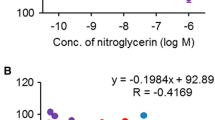Abstract
Dobutamine, a new synthetic catecholamine, has been developed as a more specific inotrope and is reported to have less effect on heart rate and peripheral vascular resistance than other catecholamines. Reports of its effects after cardiotomy have cast doubt on this idea. We have compared the haemodynamic effects of dobutamine with isoprenaline (Group I) and with dopamine (Group II) in early postcardiotomy patients. In both groups a dose response curve was evaluated (dopamine and dobutamine were given at 1.25, 2.5, 5.0 and 10.0 μg/kg/min; isoprenaline at 0.005, 0.01, 0.02 and 0.04 μg/kg/min). In Group I both drugs caused significant increases in cardiac index at the highest dose level only. At that level isoprenaline was associated with a significantly higher heart rate than dobutamine and a significantly lower systemic vascular resistance. Similarly, in Group II, both drugs caused significant increases in the cardiac index only at the highest dose level. However, the heart rate at this dose was significantly higher with dobutamine. Dopamine caused no changes in heart rate at any dose level. Neither drug was associated with any alteration of systemic vascular resistance. No changes in stroke volume, left atrial pressure or pulmonary vascular resistance were found in either group. The rise in cardiac output was caused mainly by tachycardia.
Similar content being viewed by others
References
Andy JJ, Cury CL, Ali N, Mehrotra PP (1977) Cardiovascular effects of dobutamine in severe congestive heart failure. Am Heart J 94:175–182
Dijkema FK, Elzinga G (1973) Integrator for aortic and pulmonary artery flow signals with automatic zero adjustment and beat-to-beat mean flow computation. Cardiovasc Res 7:572–576
Dollery CT, Follath F, Lewis GRJ (1975) Cardiovascular effects of dobutamine. Proc Br Pharmacol Soc, London C 20
Dunnett CW (1955) A multiple comparison procedure for comparing several treatments with a control. J Am Stat Assoc 50:1086–1121
Innes IR, Nickerson M (1975) In: Goodman LS, Gilman A (eds) Isoproterenol toxicity and side effects in pharmacological basis of therapeutics (5th edn). Mac Millan, New York, p 494
Jewitt D, Mitchell A, Birkhead J, Dollery CT (1974) Clinical cardiovascular pharmacology of dobutamine. Lancet 2:363–367
Kersting F, Follath F, Moulds R, Mucklow J, McCloy R, Sheares J, Dollery C (1976) A comparision of cardiovascular effects of dobutamine and isoprenaline after open heart surgery. Br Heart J 38:622–626
Leier CV, Heban PT, Huss P, Bush CA, Lewis RP (1978) Comparative systemic and regional haemodynamic effects of dopamine and dobutamine in patients with cardiomyopathic heart failure. Circulation 58:466–475
O'Kane H (1978) The comparative effects of dobutamine, isoprenaline and dopamine in post-operative cardiac surgical patients. Proc Eur Dobutamine Symposium, Glynne A, Lucas RA (eds) London, p 19
Sakamoto T, Yamada T (1977) Haemodynamic effects of dobutamine in patients following open heart surgery. Circulation 55:525–532
Steen PA, Tinker JH, Pluth JR, Barnhorst DA, Tarhan S (1978) Efficacy of dopamine, dobutamine and epinephrine during emergence from cardiopulmonary bypass in man. Circulation 57:378–384
Tinker JH, Tarhan S, White RD, Pluth JR, Barnhorst DA (1976) Dobutamine for inotropic support during emergence from cardiopulmonary bypass. Anesthesiology 44:281–286
Tuttle RR, Mills J (1973) Dobutamine — Development of a new catecholamine to selectively increase cardiac contractility. Circ Res 36:185–196
Williams BT, Rickards AF, Chamberlain JH (1975) Cardiac output and its derivatives using an implantable electromagnetic flow probe and intracardiac manometers. In: Longmore DB (ed) The current status of cardiac surgery. Medical and Technical Publishers, Lancashire, p 347
Winer BJ (1971) Statistical principles in experimental design, (2nd edn). McGraw-Hill-Kogakusha Limited, London, p 201
Author information
Authors and Affiliations
Rights and permissions
About this article
Cite this article
Chamberlain, J.H., Pepper, J.R. & Yates, A.K. Dobutamine, isoprenaline and dopamine in patients after open heart surgery. Intensive Care Med 7, 5–10 (1980). https://doi.org/10.1007/BF01692914
Issue Date:
DOI: https://doi.org/10.1007/BF01692914




